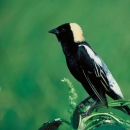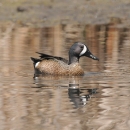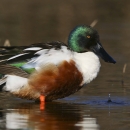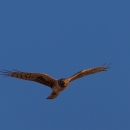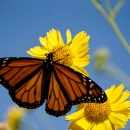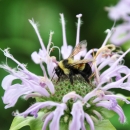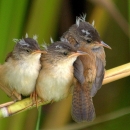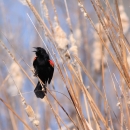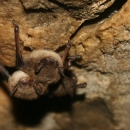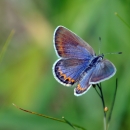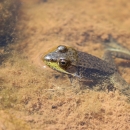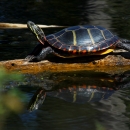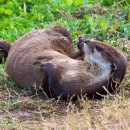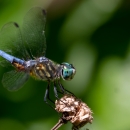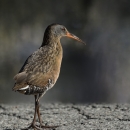Seasons of Wildlife
District waterfowl production areas are home to a diversity of wildlife, including numerous species of waterfowl, as well as muskrats, red foxes, turtles, frogs, bats, dragonflies and more.
- Fall migration offers impressive numbers of Canada geese, ducks and sandhill cranes.
- Spring migration offers a variety of unique waterbirds, songbirds and the sounds of frogs chorusing.
- Summer is nesting time, so wildlife is often less visible.
- Winter is a quieter time, but wildlife is still abundant including otters, muskrats, hawks, owls and coyotes.
Featured Species
Northern Harrier
Northern harriers, formerly known as marsh hawks, are a common visitor on district waterfowl protection areas. This slender, medium-sized raptor has a long, barred tail and distinctive white rump. It has an owl-like facial disk that is visible at close range. Harriers are unusual in that there is a greater difference between male and female plumage than is typical of raptors. Females are brown above with varying degrees of brown and buff streaking below. Males are gray above with an unmarked lighter color below with black wingtips. Juveniles are brown above and plain orange-brown below. Northern harriers are open-country birds, often seen soaring low over grassland.
Bobolink
A distinctive bird in grassland habitat, bobolinks are the only American bird that is black underneath and white on the back. As with many other bird species, the male is the colorful one during the mating season and turns a duller camouflage for most of the year.
Silphium
More commonly known as rosin weed, cup plant, prairie dock and compass plant, the various types of silphiums with their bright yellow flowers can often be seen blooming on district waterfowl production areas. The district is named in honor of naturalist Aldo Leopold, who wondered, "what a thousand acres of Silphiums looked like when they tickled the bellies of the buffalo is a question never again to be answered, and perhaps not even asked."
